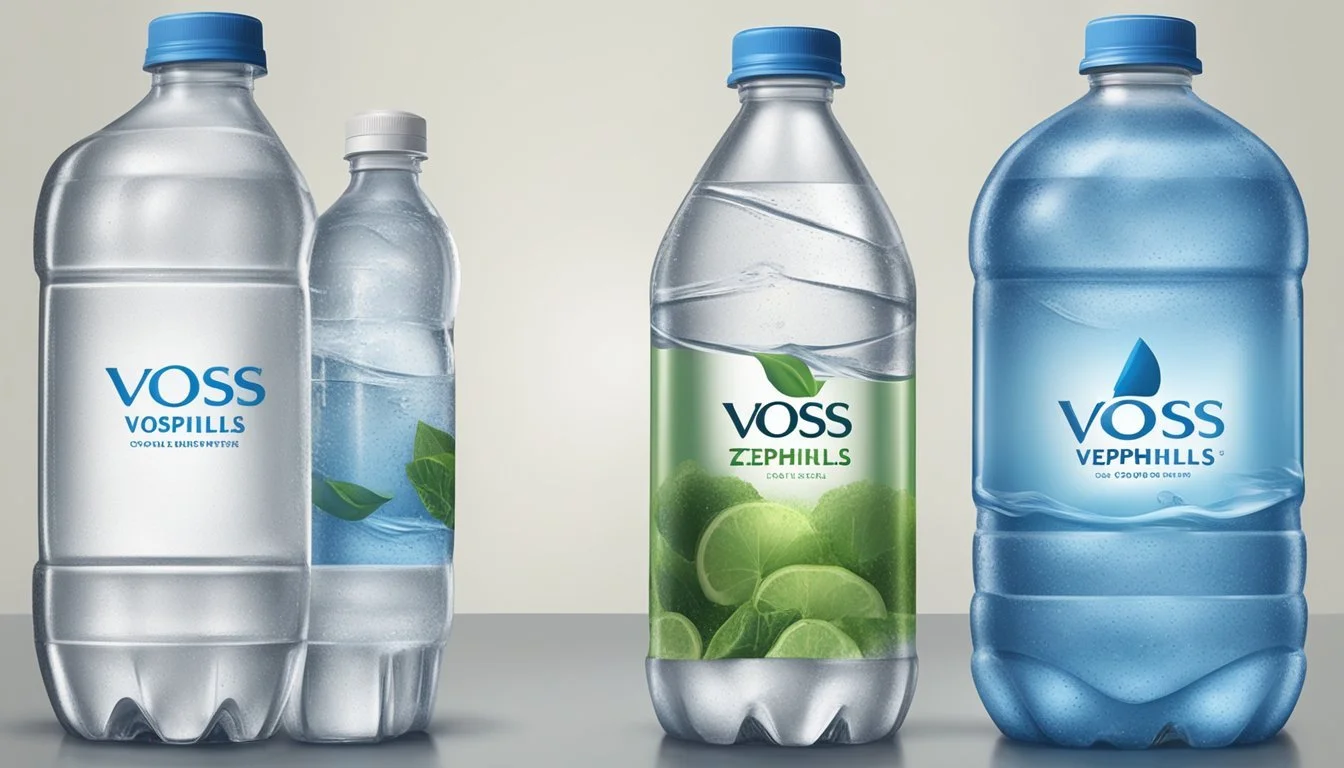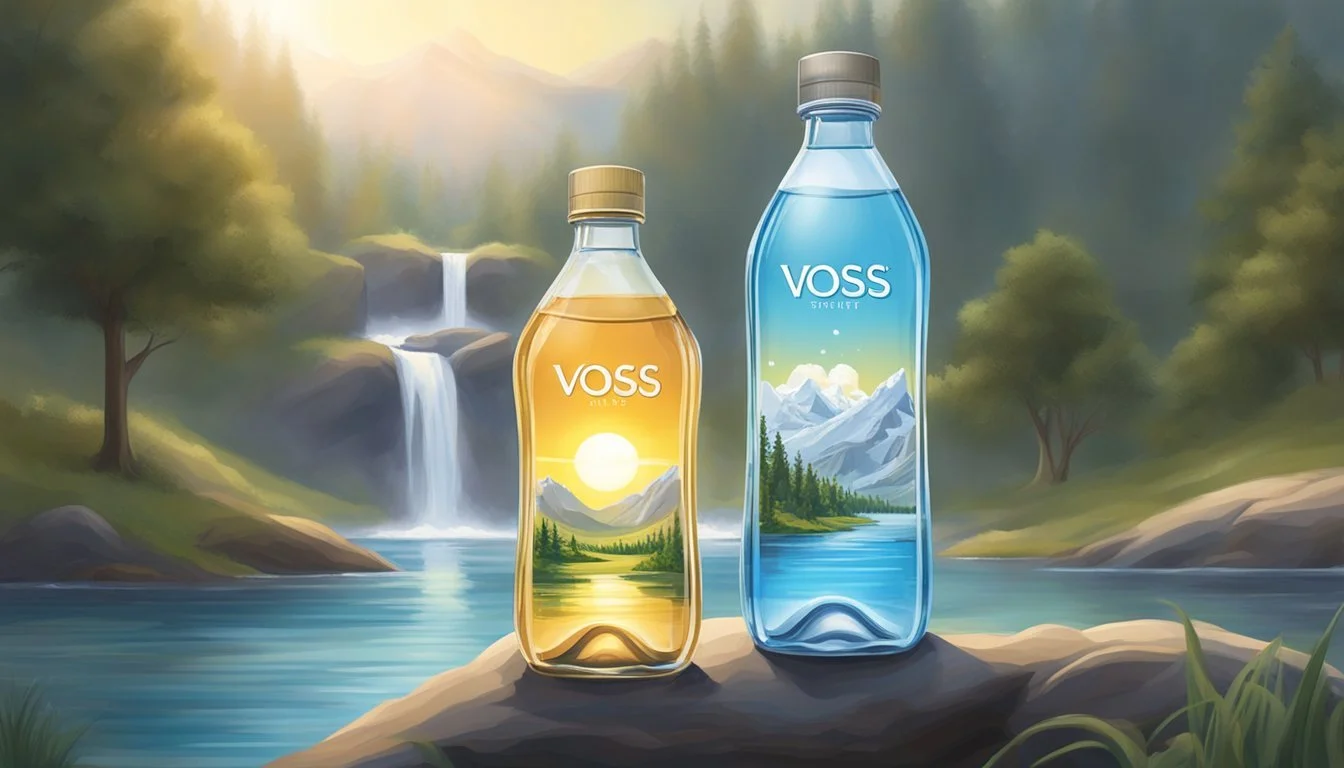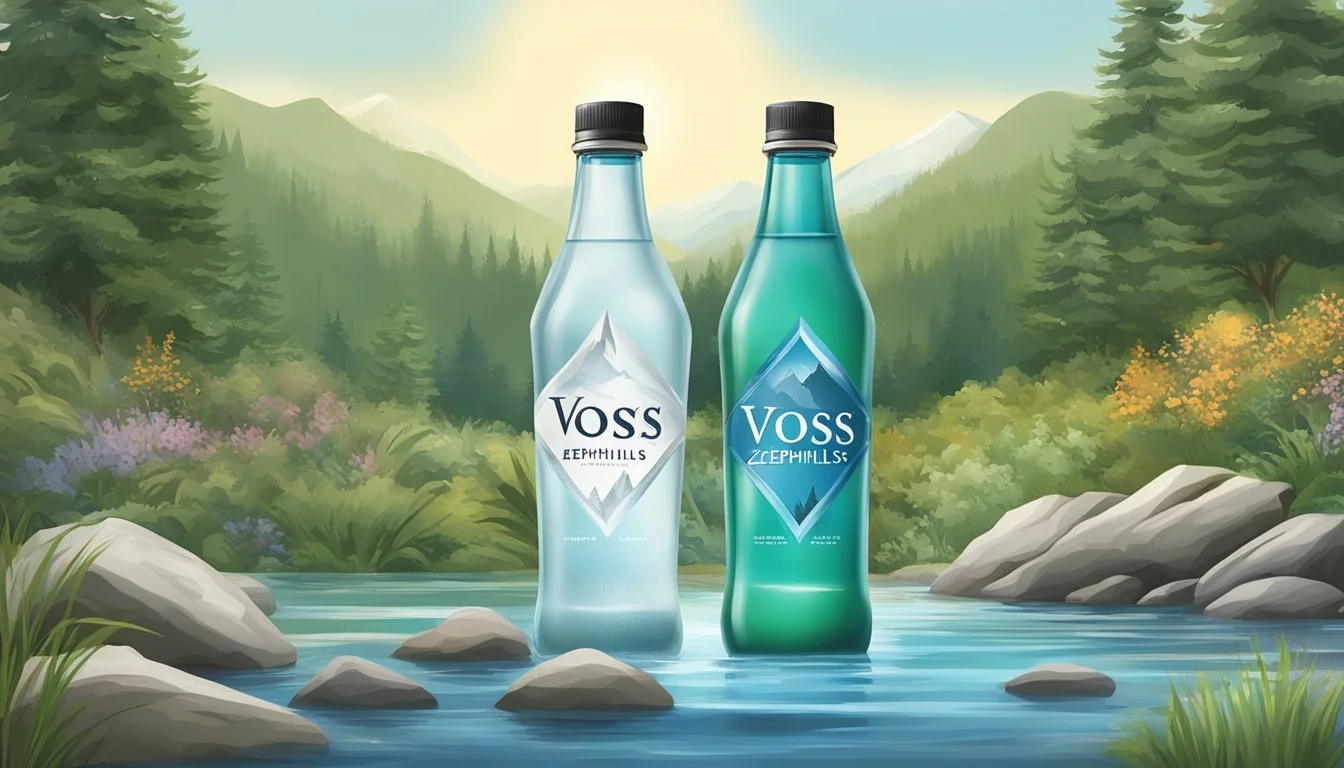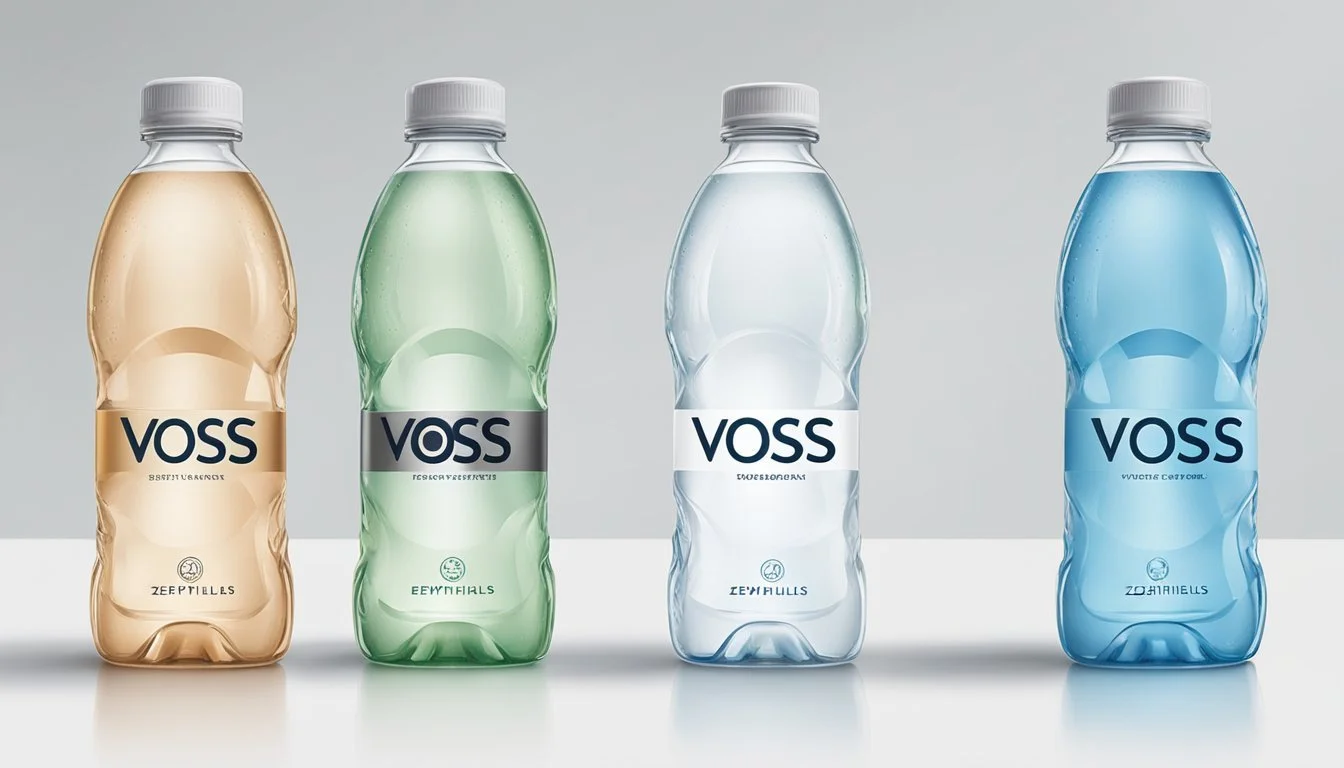Voss vs. Zephyrhills
A Comprehensive Comparison of Bottled Water Brands
In the world of bottled water, consumers are often faced with a plethora of choices, each promising purity, taste, and convenience. Two brands that frequently come up for comparison are Voss and Zephyrhills. Voss, a Norwegian brand, is known for its sleek bottle design and artesian water source. It has garnered a reputation for being a premium water choice, often found in high-end hotels and restaurants. The water is touted for its clean taste and lack of contaminants, qualities that have made it a favorite among discerning consumers.
On the other hand, Zephyrhills, sourced from various springs in Florida, is a brand that offers a taste of the Sunshine State's natural resources. It is more commonly available and is considered a go-to option for everyday hydration. The brand prides itself on offering naturally filtered water that is both refreshing and accessible. While it might not boast the same elite status as Voss, it holds its own with a loyal consumer base who appreciate its consistent quality.
When choosing between Voss and Zephyrhills, one must consider factors such as the source of the water, mineral content, taste, packaging, and price point. Each brand has its unique selling points, and preferences can be quite subjective. However, a comparison of these attributes can help determine which bottled water might be the better option for individual needs and tastes.
The Rise of Bottled Water
The last few decades have seen a substantial increase in the consumption of bottled water. This shift is largely attributed to shifting consumer attitudes towards health, hydration, and convenience.
Evolving Consumer Preferences
Consumers today are more health-conscious than ever, often prioritizing hydration as a key aspect of their wellness routines. This has caused an upsurge in demand for bottled water, as it is perceived to be a cleaner and more convenient option compared to tap water. Popular brands such as Voss and Zephyrhills have become synonymous with this trend, often competing on factors like taste and purity.
Hydration: Bottled water offers on-the-go convenience, which aligns with the active lifestyles many aim for.
Brands: There is a loyal following for specific bottled water brands due to factors like source, taste, and marketing efforts.
Bottled Waters: The variety includes spring water, mineral water, purified water, and even infused or flavored water.
Taste: Some consumers report preferences for the taste of certain brands of bottled water over others, often influenced by the water source.
Renowned brands differentiate themselves through the taste and source of their water. Consumers have shown they are willing to pay a premium for brands that offer a unique selling proposition or for those perceived to provide superior hydration benefits.
Understanding Water Source and Types
When selecting bottled water, the source and type are critical. Voss and Zephyrhills offer different experiences due to their unique sources and filtration processes.
Natural Spring Water vs. Purified Water
Spring water originates from natural underground sources, called aquifers, and flows to the earth's surface without mechanical aid. Voss, sourced from an aquifer in Norway, is considered natural spring water. It is minimally treated to maintain its natural mineral content and taste.
Purified water, such as Zephyrhills, can originate from a variety of sources including springs, wells, or even municipal supplies. This water undergoes rigorous filtration processes like reverse osmosis to remove impurities and dissolved solids, resulting in a consistent and clean taste.
Artesian Water and Mineral-Rich Selections
Artesian water comes from a well tapping a confined aquifer where the water level is above the top of the aquifer. Voss water is an example of artesian water, which may contain a variety of dissolved minerals, depending on the geology of the land where the aquifer is located.
Water rich in minerals often has a distinctive taste and is sometimes sought after for its purported health benefits. Both natural spring water and artesian water typically offer a higher mineral content compared to purified water.
The Distinctiveness of Volcanic Rock Filtration
Volcanic rock filtration is a natural process where water passes through layers of volcanic rock and becomes enriched with minerals and electrolytes. While neither Voss nor Zephyrhills uses volcanic rock filtration, this process is pertinent to brands like Waiakea, which sources water from a volcanic well in Hawaii. The volcanic rock imparts a unique mineral composition and alkalinity to the water that is characteristic to the location.
Comparing Voss and Zephyrhills
In the bottled water marketplace, Voss and Zephyrhills offer distinct origins, taste profiles, and brand philosophies. These aspects form the basis of comparison between the two brands.
Origin and Water Source
Voss water originates from Norway, known for its pristine natural environment. The water is sourced from an aquifer protected deep beneath the ground, ensuring a high level of natural purification. In contrast, Zephyrhills is a brand that uses sources from Florida's springs. While both brands pride themselves on sourcing pure water, their geological origins contribute to distinct mineral compositions and overall mouthfeel.
Taste Profile and Water Quality
Voss: Crisp and clean are often terms associated with Voss' taste profile, attributed to its low mineral content and untouched quality. The product undergoes minimal treatment, preserving its natural purity.
Zephyrhills: With a more familiar taste, Zephyrhills is often described as fresh and invigorating. The water's quality is maintained through stringent purification processes to ensure safety and consistency.
Bottling Process and Brand Philosophy
Voss touts an eco-friendly approach with attention to sustainable packaging, such as offering its still and sparkling water in glass bottles. Zephyrhills' brand philosophy emphasizes a local footprint — it specifically caters to the Florida region and often highlights its commitment to the community in its messaging.
Both companies implement a rigorous water purification process to deliver high-quality products. However, Voss' presentation and marketing as a premium brand are key differentiators, as it often appeals to a luxury market segment. Meanwhile, Zephyrhills is known for its accessibility and regional focus, often finding its place in daily hydration routines rather than exclusive venues.
Health and Hydration Factors
When comparing Voss and Zephyrhills bottled waters, it is crucial to examine their electrolytes and pH levels, in addition to their hydration and mineral contents, as these factors significantly impact health and hydration.
Electrolytes and pH Balance
Electrolytes such as magnesium, calcium, and potassium chloride play a vital role in maintaining the body's pH balance and overall function. Voss water, sourced from Norway, is known for its low mineral content, which typically translates to fewer electrolytes as compared to some other brands. Conversely, Zephyrhills, sourced from Florida, may offer a different electrolyte profile due to its natural spring water source.
pH level is another key aspect. A balanced pH level in water is considered to be around 7, which is neutral. Waters with significantly higher or lower pH values may affect the body’s overall pH balance.
Hydration and Mineral Content
Hydration is not solely about water intake; the quality of water and its mineral content also matter.
Magnesium and calcium are important for bone health and muscular function.
Potassium chloride helps regulate fluid balance and is critical for proper cell function.
Both brands deliver hydration, but the mineral content can differ. Voss tends to have a minimalistic mineral content profile, focusing on a clean and crisp taste. Zephyrhills, being natural spring water, naturally contains a range of minerals, which may contribute to more effective hydration.
Mineral Content Comparison:
Mineral Voss (mg/L) Zephyrhills (mg/L) Magnesium Low* Moderate* Calcium Low* Moderate* Potassium Chloride Very Low* Low*
*Exact quantities can vary by source and batch. It's recommended to check the bottle labels for detailed mineral content information.
These hydration and mineral factors are instrumental when making an informed decision between Voss and Zephyrhills bottled waters.
Environmental Impact and Sustainability
When considering the environmental impact and sustainability of bottled water brands like Voss and Zephyrhills, one must assess both their bottling practices and the effects of water extraction on local ecosystems. Each company's approach to these issues plays a significant role in determining its environmental footprint.
Bottling Practices and Eco-Friendly Packaging
Voss utilizes bottles made from glass and PET plastic, the latter being recyclable. They have also introduced a line of sparkling waters available in aluminum cans, which are widely recognized for their recyclability. On the other hand, Zephyrhills employs bottles that are also made from PET plastic. As of the latest information, Zephyrhills has committed to making its bottles using 100% recycled plastic by 2022, reducing the need for new plastic production.
BPA Presence: Neither brand uses BPA in their plastic bottles.
Packaging Innovations:
Voss: Offers products in high-quality, reusable glass bottles.
Zephyrhills: Focuses on lightweighting their bottles to use less plastic.
Water Extraction and Local Ecosystems
Voss claims to source its water from a natural aquifer in Norway, which is said to be protected from pollutants. The brand emphasizes the low impact on the local environment and the natural replenishing rate of the aquifer. Zephyrhills, a brand sourcing from several spring sites in Florida, is inherently connected to the regional natural water cycle, and the company indicates dedication to preserving the surrounding environment.
Impact on Groundwater Levels: Both companies assert that they monitor and manage their water sources to prevent over-extraction and to support natural rejuvenation.
Responsibility Toward Local Communities: Voss and Zephyrhills both engage in sustainable practices and claim to work responsibly to minimize the impact on local ecosystems where they source their water.
Consumer Perception and Taste
When evaluating Voss and Zephyrhills, consumer perception and taste are critical factors in determining their popularity and preference in the bottled water market.
Brands and Market Position
Voss is often seen as a premium water brand, known for its sleek bottle design and association with upscale hotels and restaurants. It is marketed as a high-end product and carries a corresponding price tag, positioning it in the luxury segment of the water market. In contrast, Zephyrhills is a well-known regional brand in the United States, specifically in Florida. It is considered a more accessible and affordable option for everyday hydration.
Fiji Water and Smartwater are other notable competitors in the market. Fiji Water is recognized for its natural artesian source and distinct taste, contributing to its image as an exotic and pure choice. Smartwater, on the other hand, is known for its electrolyte-enhanced profile, aiming to offer consumers a clean and crisp taste.
Sensory Experience and Aftertaste
The sensory experience of a bottled water, including its aftertaste, greatly influences consumer preference. Voss is characterized by a clean and neutral taste with minimal aftertaste, a feature that appeals to those seeking a pure tasting experience. Zephyrhills, sourced from various springs in Florida, generally provides a fresh and light flavor, though individual perceptions of aftertaste might vary.
Water Brands and their aftertaste:
Fiji Water: Often described as smooth with a slightly sweet aftertaste
Smartwater: Popular for its purified taste with an added crispness from electrolytes
Expensive brands: Typically associated with a more refined and clean taste profile
Both Voss and Zephyrhills aim to provide a taste that satisfies consumer expectations of bottled water being refreshing and free from unpleasant flavors.
Water Safety and Purity
In evaluating bottled water, the focus on water safety and purity is paramount. This involves understanding the purification processes and technologies employed, as well as the standards for filtration which ensure that contaminants are effectively removed.
Purification Methods and Technologies
Voss utilizes various purification methods to ensure the safety and cleanliness of its water. Its primary process includes multistage filtration and ultraviolet light treatment, which are effective in killing bacteria and other microorganisms. Furthermore, Voss water is packaged in high-quality, BPA-free bottles, reducing potential chemical leaching.
Zephyrhills, largely sourced from springs in Florida, undergoes a natural filtration process as it percolates through the earth. This brand further employs measures such as ozone treatment to disinfect the water without leaving residual chemicals. Such methods are adept at removing impurities and preserving the water's natural mineral composition.
Contaminants and Filtration Standards
When it comes to contaminants and filtration standards, both brands strive to meet or exceed industry and government regulations.
Reverse osmosis is a technology commonly used in the bottled water industry, including by brands like Voss and Zephyrhills, to reduce dissolved solids, including various contaminants, that may be present in the water.
Environmental factors and the source of water significantly influence the presence of contaminants, which can range from heavy metals to organic compounds. Rigorous filtering standards are set to ensure that any contaminants are reduced to levels deemed safe for consumption by regulatory bodies.
Regular testing is conducted to maintain consistency in the purity of the water, as well as to monitor for any potential breaches in safety standards, ensuring that the consumer receives a product that is both clean and safe to drink.
Comparative Analysis by Brand
This section provides a comparative analysis of prominent bottled water brands, focusing on their quality, source, and taste profile.
Dasani vs. Aquafina
Dasani, owned by Coca-Cola, and Aquafina, produced by PepsiCo, are two leading brands in the bottled water market. Both brands purify their water using a process called reverse osmosis, but Dasani includes added minerals for taste, while Aquafina prides itself on its pure, clean taste with no added minerals.
Dasani:
Source: Public water sources
Process: Reverse osmosis, added minerals
Aquafina:
Source: Public water sources
Process: Reverse osmosis, no added minerals
Evian vs. Icelandic Glacial
Evian Natural Spring Water and Icelandic Glacial represent premium choices within the bottled water market, deriving their distinct tastes from their unique sources. Evian is sourced from the French Alps and is naturally endowed with minerals. In comparison, Icelandic Glacial is known for its water originating from Iceland's pristine glaciers, boasting a low mineral content and a notably clean taste.
Evian:
Source: French Alps
Qualities: Mineral-rich, balanced taste
Icelandic Glacial:
Source: Iceland's glaciers
Qualities: Low mineral content, pure taste
Regional Favorites and Artisan Waters
Beyond the global titans, regional favorites such as Poland Spring and brands by Nestlé Waters offer local charm and quality. Poland Spring originates from multiple springs in Maine and is a popular choice on the East Coast. Nestlé's range includes various regional brands that offer their own unique profiles and are sourced from carefully selected springs or aquifers across regions.
Poland Spring:
Source: Springs in Maine
Notable: Popular in the East, varied spring sources
Nestlé Brands:
Source: Selected springs and aquifers
Specialty: Local sourcing, tailored to regional taste preferences
Price Points and Value for Money
When purchasing bottled water, consumers often weigh the price against the perceived value. Two distinct categories emerge: lower cost options that offer affordability with some compromises and premium brands that claim superior quality, justifying the higher price.
Lower Cost Options and Their Trade-offs
Lower cost options, such as Zephyrhills and Nestlé's Pure Life, are known for their affordability. Zephyrhills, sourced from Florida springs, provides a regional choice that often undercuts national brands on price. However, trade-offs can include a less distinctive taste and the use of plastic bottles that may not be as eco-friendly as some consumers desire. Pure Life is often criticized for being average despite its affordability and widespread availability.
Pros:
Affordable: Accessible for regular consumption.
Widespread Availability: Easily found in most stores.
Cons:
Taste: Often considered less remarkable.
Eco-Impact: Usually packaged in single-use plastics.
Premium Brands and Their Justifications
Premium brands like Voss Water and Fiji Water come with justifications for their higher price points. Voss Water, with its iconic cylindrical bottle, is marketed not only as a beverage but as a lifestyle accessory. Consumers pay for the Norwegian brand's perceived quality and brand image. Fiji Water, on the other hand, claims its water has a unique mineral profile due to the volcanic aquifer it is sourced from, potentially justifying its premium tag.
Pros:
Quality Perception: Premium brands are associated with higher quality.
Packaging: Often in glass or eco-friendlier materials.
Cons:
Price: Significantly more expensive than budget-friendly alternatives.
Accessibility: May not be available in all regions.
Bottled Water in Popular Culture
Bottled water brands like Voss and Zephyrhills have transcended mere hydration. They are deeply ingrained in popular culture, reflecting one's lifestyle and social status.
Water as a Status Symbol
In the realm of high society and affluence, brands such as Voss have become synonymous with status. The water's pristine source and sleek packaging are often perceived as a reflection of a refined lifestyle. It's not uncommon to see Voss bottles prominently displayed at high-end hotels and in the hands of celebrities, further cementing its position as a luxury accessory.
Celebrity Endorsements and Brand Image
The branding of water like Zephyrhills and Voss is significantly influenced by celebrity endorsements. Celebrities are often photographed with bottles of their preferred water brand, subtly suggesting that these choices are aligned with their personal brand image and success. These endorsements can have a profound impact on consumer preferences, as fans may select bottled water brands based on the perceived value associated with their idols. Presidents and influential figures may also be seen with specific brands, implicitly endorsing them and shaping public perception.
Conclusion
When comparing Voss and Zephyrhills bottled waters, consumers should consider factors like source, taste, and mineral content as they relate to personal preference.
Choosing the Right Water for You
Key considerations for picking a bottled water brand revolve around personal preference and intended use. Some may value the purity and mineral content of Voss, which sources its water from Norway and is known for its stylish packaging and clean taste. Others may prioritize the regional sourcing and cost-effectiveness of Zephyrhills, which is derived from Florida springs. Each brand caters to different consumer needs:
Voss: Ideal for those seeking a premium water experience and a distinct taste that may pair well with fine dining.
Zephyrhills: Suitable for consumers looking for reliably sourced water with a more budget-friendly price point.
Final Thoughts on Voss and Zephyrhills
In evaluating both brands, they occupy different positions on the spectrum from worst to best based on various criteria:
Voss:
Pros: Pristine source, minimal processing, and a luxurious brand image.
Cons: Higher price point and less accessible to all consumers.
Zephyrhills:
Pros: Affordable, convenient, and has a familiar taste preferred by some consumers.
Cons: Less distinctive in terms of branding and perceived quality.
Recommendations are not one-size-fits-all as the best choice relies on individual needs and preferences. While Voss may appeal to those seeking a high-end water option, Zephyrhills serves as a reliable everyday choice. Consumers are encouraged to weigh these factors to choose the bottled water that best aligns with their lifestyle and taste.










